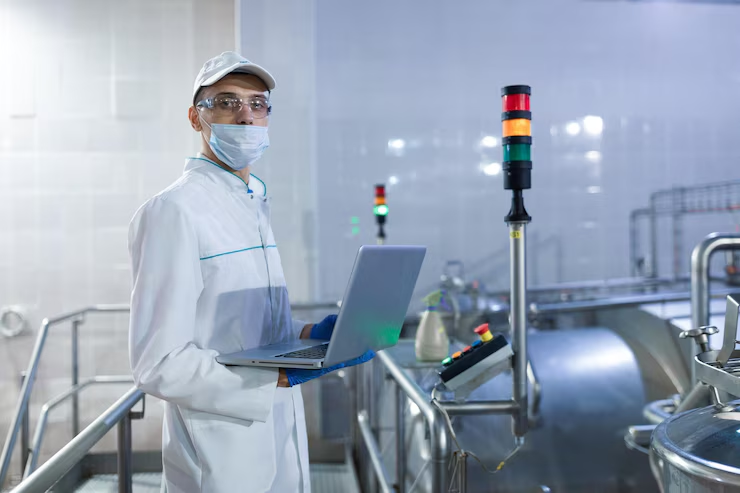What Is Pharmaceutical Engineering?
Pharmaceutical engineering is a field that combines science and engineering to design, develop, and manage systems and processes in the pharmaceutical industry. This includes everything from how drugs are made to how clean the environment must be during production.
If you’re working with pharmaceutical consultants or exploring pharmaceutical engineering services, this guide will help you understand how medicines go from a basic idea to a product ready for patients—while meeting strict safety and cleanliness standards.
Why Pharmaceutical Engineering Matters
Medicines are powerful tools, but they must be made under carefully controlled conditions to ensure they’re safe and effective. That’s where engineering in pharmacy comes in.
Key reasons why this field is essential:
- Ensures safe manufacturing conditions
- Helps meet FDA and international compliance
- Designs clean, efficient production facilities
- Supports innovation through new technology and automation
Top pharmaceutical consultants help companies avoid errors, reduce delays, and build facilities that meet all the latest regulations.
Step-by-Step: From Concept to Production
Here’s how pharmaceutical engineering supports every step of drug development and production:
1. Initial Planning
This stage involves selecting the right process, equipment, and facility layout. Engineers and pharma consultants also consider safety, speed, and cost-effectiveness.
2. Designing the Facility
Facilities must be built to protect both the product and the people. That means:
- Using special air filters
- Managing how people and materials move inside
- Creating separate zones to avoid contamination
This is where pharmaceutical cleanroom design becomes critical.
3. Cleanroom Design
A cleanroom is a specially designed area with filtered air, limited human access, and strict environmental controls.
Terms you might hear include:
- Pharma clean room design
- Clean room design in pharmaceutical
- Pharmacy cleanroom design
All refer to designing rooms that meet the cleanliness standards required for medicine production.
Cleanroom Basics:
- ISO classifications determine cleanliness levels
- Airflow and temperature must be controlled
- Walls, floors, and ceilings are easy to clean
- Equipment and people follow specific entry/exit processes
What Do Pharmaceutical Consultants Do?
Pharmaceutical consultants offer expert advice and guidance to companies throughout this process. They help with:
- Facility design
- Regulatory documentation
- Equipment selection and validation
- Cleanroom setup and staff training
Choosing the right pharma consultancy ensures your project runs smoothly and meets all legal requirements.
Choosing the Right Pharma Consultancy Firm
When looking for pharmaceutical engineering consulting firms, here are some helpful tips:
Look for firms that:
- Have experience in your type of drug or product
- Understand local and international laws
- Offer services from concept through validation
- Can design and manage pharmacy cleanroom design projects
A strong consultant will explain things in plain language and give you clear timelines and costs.
Benefits of Working with a Pharmaceutical Consultant
Reduces costly mistakes
Keeps your project on schedule
Helps you pass inspections
Offers technical and regulatory expertise
Frequently Asked Questions (FAQs)
1. What is pharmaceutical engineering used for?
Pharmaceutical engineering helps design and operate systems to safely and efficiently produce medicines.
2. What does a pharmaceutical consultant do?
They provide expert advice on facility design, compliance, and production processes in the pharmaceutical industry.
3. Why do pharmaceutical companies need cleanrooms?
Cleanrooms prevent contamination and are required for making many types of medicines, especially sterile or injectable drugs.
4. What’s the difference between pharmaceutical and pharmacy cleanroom design?
Pharmaceutical cleanrooms are used in large-scale manufacturing; pharmacy cleanrooms are often smaller and used for compounding medications.
5. How do I find the right pharmaceutical engineering services?
Look for companies with experience in your product area, strong compliance knowledge, and a full-service offering from concept to cleanroom design.
Conclusion: Safe Medicines Start with Smart Engineering
Pharmaceutical engineering services are the foundation of safe, high-quality drug production. Whether you’re building a new facility or improving an existing one, experienced pharmaceutical consultants help you do it right—from idea to cleanroom compliance.
Need guidance? Reach out to a trusted pharma consultancy firm to get started today.

